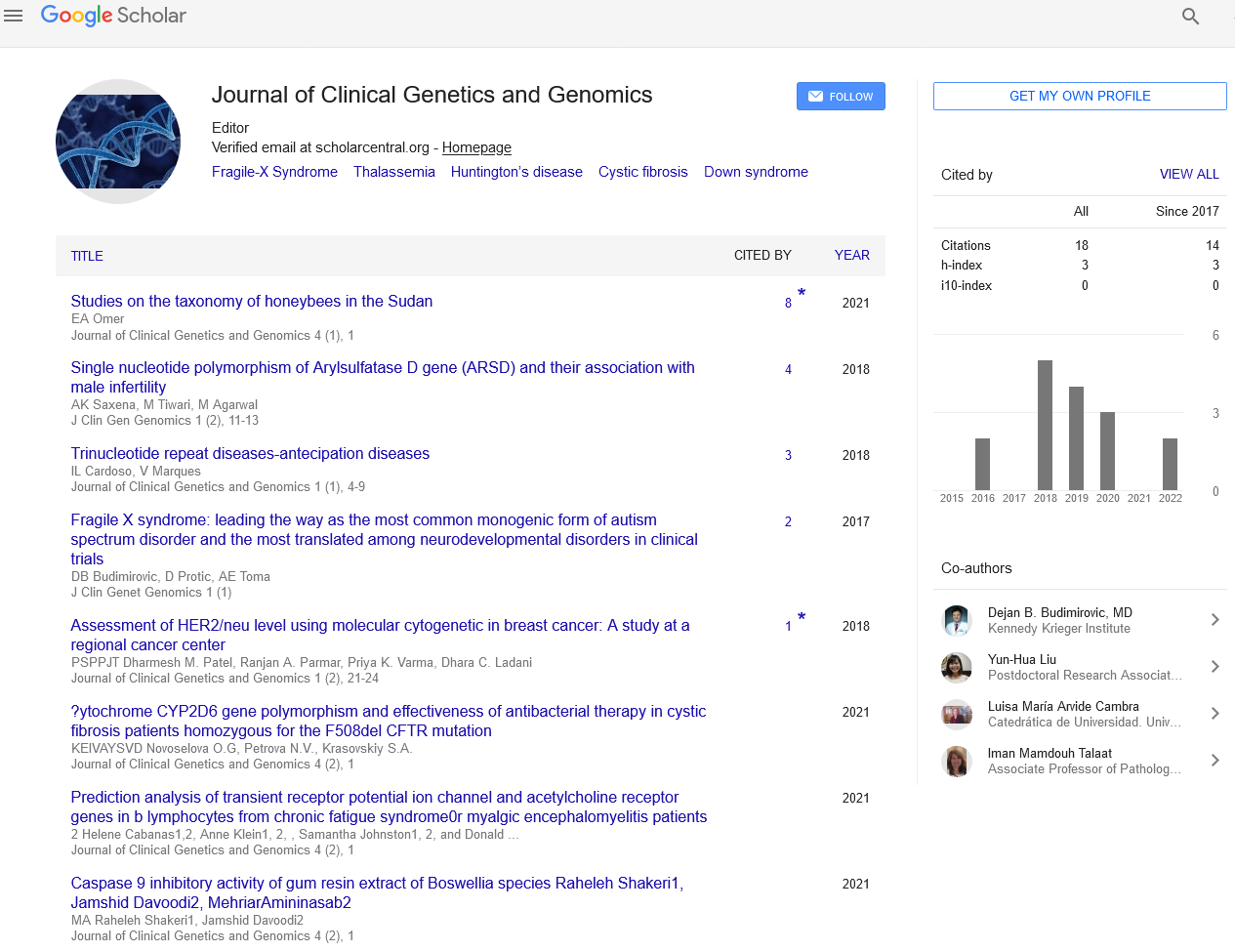Underlying variant roles in disease epidemiology: SARS-CoV-2 genomic variations from Gujarat
Received: 02-Feb-2022, Manuscript No. PULJCGG-22-5476; Editor assigned: 04-Feb-2022, Pre QC No. PULJCGG-22-5476 (PQ); Accepted Date: Feb 15, 2022; Reviewed: 09-Feb-2022 QC No. PULJCGG-22-5476 (Q); Revised: 11-Feb-2022, Manuscript No. PULJCGG-22-5476 (R); Published: 16-Feb-2022, DOI: 10.37532/puljcgg.22.5(1).1-2
Citation: Hopkins L. underlying variant roles in disease epidemiology: SarsCov-2 genomic variations from Gujarat. J. Clin.Genet.Genom.2022;5(1):1-2.
This open-access article is distributed under the terms of the Creative Commons Attribution Non-Commercial License (CC BY-NC) (http://creativecommons.org/licenses/by-nc/4.0/), which permits reuse, distribution and reproduction of the article, provided that the original work is properly cited and the reuse is restricted to noncommercial purposes. For commercial reuse, contact reprints@pulsus.com
Abstract
In the course of its evolution, humanity has experienced a number of pandemics. The list includes a number of historical occurrences, such as the measles, Ebola, SARS, and Middle East respiratory disease (MERS), among others. The most recent variation on this is coronavirus disease 2019, often known as COVID-19, which is brought on by the severe acute respiratory syndrome coronavirus 2 (SARS-CoV-2). As of August 18, 2020, COVID-19 had killed 0.7 million people worldwide and afflicted over 21 million people from over 180 nations. Genomic technologies have made it possible for us to comprehend the genetic make-up of pathogens as well as their virulence, evolution, and rate of mutation, among other things. More than 83,000 viral genomes have so far been stored in open databases like GISAID and NCBI. India is currently the third-most severely impacted nation by COVID-19, with 2.7 million cases and more than 53,000 fatalities. With a fatality rate of 3.48% compared to the national average of 1.91%, Gujarat ranks as the 11th most severely afflicted state. To understand the phylogenetic distribution and variations of the SARS-CoV-2 virus in comparison to international and domestic sequences, 502 SARS-CoV-2 genomes from Gujarat were sequenced and studied in this work. To better understand its function in pathophysiology, additional variations from sick and healthy patients from Gujarat and around the world were studied. The G25563T variant, which is found in Orf3a and may be involved in viral pathogenesis, was the other harmful mutation found in deceased patients from Gujarat (p-value of 0.355) and the rest of the globe (pvalue of 2.43E-06). The GH clade of GISAID is forming separate clusters with SARS-CoV-2 genomes from Gujarat. This investigation will provide information on the SARS-CoV-2 samples from Gujarat, India's viral haplotype.
Key Words
Respiratory Syndrome; Coronavirus; Genomes; Phylogenetic; Haplotype; Evolution
Introduction
According to the World Health Organization's (WHO) most recent situation report-209, which was retrieved on August 18, 2020, there have been a total of 21,294,845 confirmed positive cases of COVID-19 worldwide, resulting in 761,779 fatalities. The second wave of SARS coronavirus 2 (SARS-CoV-2) infections has begun in a number of countries, including China, Spain, Australia, Japan, South Korea, and the United States. With 2,771,958 cases and 53,046 fatalities, India ranks third among nations impacted by the 2019 coronavirus illness (COVID-19), behind the United States and Brazil. Gujarat is situated in India's western region. According to the COVID team it is the 11th most affected state in India, with 80,942 cases and 2,820 fatalities. However, Gujarat has a death rate of 3.48% and a recovery rate of 78.83%, which is 5% greater than the country's current recovery rate. Because of this, knowing the pathogen's variety, variation, and impact on pathogenesis and illness severity by genome sequencing will be essential. An average of 381 SARS-CoV-2 genomes are added to global repositories each day from all across the world, including the GISAID and NCBI databases. The SARS-CoV-2 genome is 29–30.6 kb in size. 10 genes in the genome are responsible for encoding 4 structural and 16 non-structural proteins (NSPs). The four structural genes—spike (S), envelope (E), membrane (M), and nucleocapsid (N)—encode structural proteins. The pp1ab protein and 15 NSPs are encoded by the ORF1ab gene, which is the biggest gene in the SARS-CoV-2 virus. The ORF1a gene produces the pp1a protein, which has 10 NSPs as well.
The entire genome of 502 SARS-CoV-2 from Gujarat was sequenced as part of the current investigation, and its results were compared to 2,121 SARS-CoV-2 genomes from other parts of the world with known patient status. In total, 361 verified COVID-19 positive individuals are included in the dataset, including 122 female and 239 male patients from Gujarat, India. Based on the dominant and recessive allelic frequencies, a total of 502 viral genomes from 361 samples were also sequenced. To describe their clades and variation distribution, these genomes were compared to a total of 79,518 full viral genome sequences as accessed on August 18, 2020. Further statistical approaches were used to comprehend the variations with regard to illness epidemiology. Tracking pathogen evolution using whole genome sequencing is essential for assessing the progression of the pandemic locally as well as worldwide in the absence of clinically licenced medications and other potential therapeutics for treating COVID-19. This will also aid in the creation of better vaccine development tactics, the discovery of prospective therapeutic targets, and the understanding of host-pathogen interactions.
The increasing death rate, particularly in Ahmedabad, India, has become a source of great worry and has yet to be adequately explained by science. We have discovered alterations that are statistically significant and differently dominant in the viral genome isolates from Gujarat, India.





